Textile waste is a pressing global problem, with only 12% recycled worldwide, according to the non-profit Ellen MacArthur Foundation for Sustainable Fashion . Even just 1% of old clothes are recycled into new ones, with the majority used for low-value items like insulation or padding.
Nowhere is the problem more acute than in China, the world’s largest producer and consumer of textiles, where more than 26 million tons of clothing are thrown away each year, according to government statistics. Much of it ends up in landfills.
At Wenzhou Tiancheng Textile Co., one of China's largest cotton recycling plants, two piles of discarded cotton clothes and bed linens are piled on the office floor, ready to be shredded for recycling.
Factories like these barely make a dent in a country where the garment industry is dominated by “fast fashion”—cheap clothes made from non-recyclable synthetics, not cotton. Produced from petrochemicals that contribute to climate change and air and water pollution, synthetics account for 70 percent of domestic clothing sales in China.
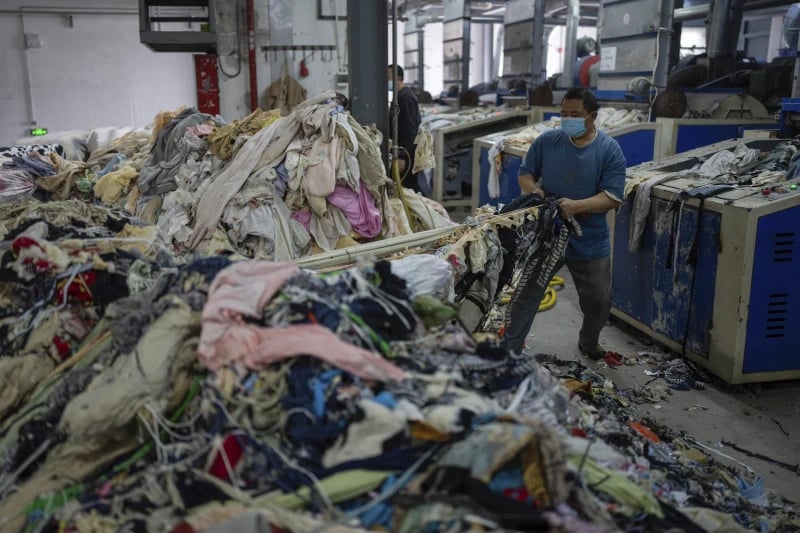
A worker feeds scraps of fabric into a shredder at the Wenzhou Tiancheng Textile Company. Photo: AP
China's big e-commerce platforms like Shein and Temu have turned the country into one of the world's biggest producers of low-cost fashion, selling in more than 150 countries.
According to Chinese authorities, only about 20% of China's textiles are recycled, and most of that is cotton.
In China, cotton recycled from used clothing is banned from being used to make new clothes, in a bid to eliminate the practice of recycling dirty or contaminated materials. But now the giant, rope-like skeins of cotton yarn made from used clothing can only be sold for export, mainly to Europe.
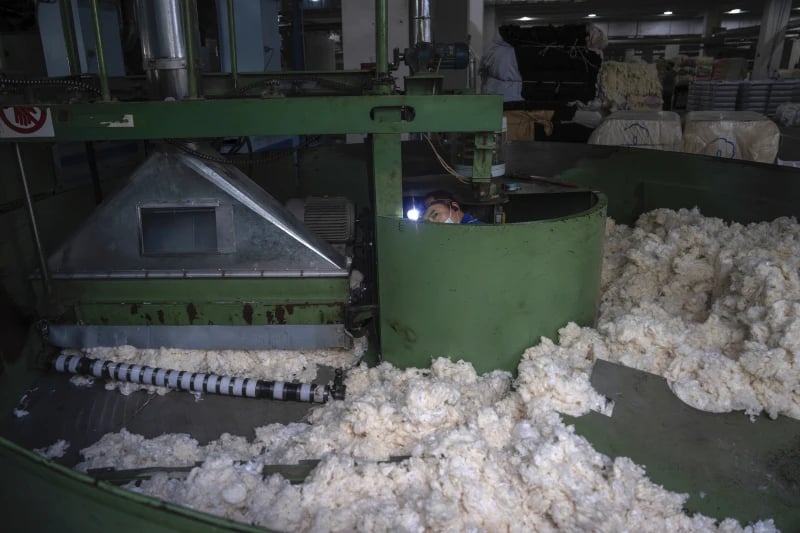
Workers maintain machinery at Wenzhou Tiancheng Textile Company, one of China's largest cotton recycling plants. Photo: AP
Many Chinese consumers are reluctant to buy used goods, a reason that Wenzhou factory sales manager Kowen Tang attributes to rising household incomes. “They want to buy new clothes, new things,” he said of the stigma associated with buying secondhand.
However, among young Chinese, a growing awareness of sustainability has contributed to the emergence of emerging “recycled” clothing businesses.
Thirty-year-old designer Da Bao founded Times Remake in 2019, a Shanghai-based brand that takes old clothes and re-makes them into new ones. In the company’s Shanghai studio, tailors work with old denim and sweatshirts, stitching them into new fashions.
Another fashion brand called Reclothing Bank also sells clothes, bags and other accessories made from materials such as plastic bottles, fishing nets and flour sacks.
Zhang Na, who owns the Reclothing Bank brand, said she founded the company in 2010 to “give new life to old things.” Zhang said she has been conscious of sustainability since opening the store, with her core customers being in their 20s and 30s.
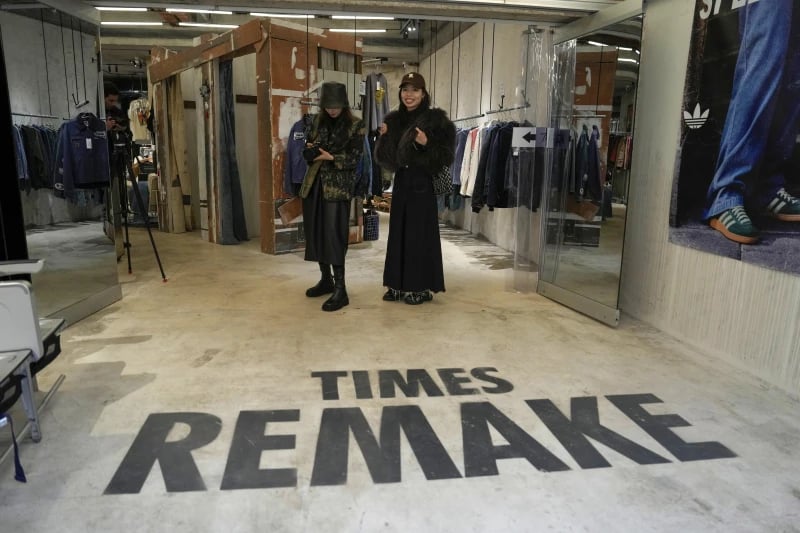
Customers visit a Times Remake store in Shanghai. Photo: AP
Bao Yang, a college student who stopped by the store during a visit to Shanghai, said she was surprised to see the clothes. "I heard that many of the clothes are actually made from seashells or corn husks, but when I touched them, I had no idea they would feel so comfortable," she said.
However, she admits that buying sustainable clothing is difficult because people her age are more addicted to fast fashion or don't think about the sustainability of their clothes. Recycled clothes sold at stores like Reclothing Bank also cost much more than fast fashion brands due to the expensive production methods.
That's the real problem, says Sheng Lu, a professor of fashion and apparel studies at the University of Delaware. "Studies consistently show that consumers don't want to pay more for clothes made from recycled materials; instead, they actually expect lower prices because they perceive such clothes as being made from secondhand materials," he says.
With higher costs in purchasing, sorting and disposing of used clothing, he doesn't see sustainable fashion succeeding on a large scale in China, where clothing is very cheap to produce.
Ngoc Anh (according to AP)
Source: https://www.congluan.vn/trung-quoc-tran-ngap-rac-thai-det-may-do-thoi-trang-nhanh-len-ngoi-post302927.html



![[Photo] Binh Trieu 1 Bridge has been completed, raised by 1.1m, and will open to traffic at the end of November.](https://vphoto.vietnam.vn/thumb/1200x675/vietnam/resource/IMAGE/2025/10/2/a6549e2a3b5848a1ba76a1ded6141fae)






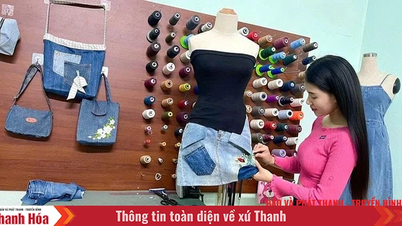































































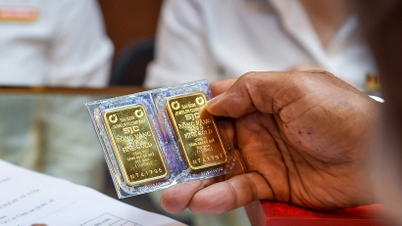







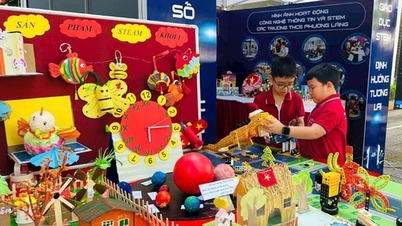



















Comment (0)